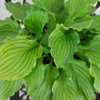H. 'Summer Lovin' ain't lovin' this summer
irawon
11 years ago
Related Stories

PRODUCT PICKSGuest Picks: Splashes of Watercolor for Summer
Vivid yet soothing, watercolor-inspired home decor is awash with liveliness — and totally on trend
Full Story
PETSHouzz Call: Show Us Your Summer-Loving Dog!
Share a photo of your pooch kicking back in the backyard, helping you in the workshop or enjoying your favorite summer getaway
Full Story
GARDENING AND LANDSCAPINGYour Spring and Summer Party Checklist
12 ways to get your patio ready for warm-season fun
Full Story
MONTHLY HOME CHECKLISTSTo-Dos: Your June Home Checklist
Get your house ready for summer with a mix of maintenance musts and breezy room refreshes
Full Story
KITCHEN DESIGNWonderful Wood Countertops for Kitchen and Bath
Yes, you can enjoy beautifully warm wood counters near water sans worry (almost), with the right type of wood and sealer
Full Story
BACKYARD IDEASThis Backyard Is Ready to Party
Colorful outdoor furniture, a custom pizza oven and a stainless steel hot tub make for a lively backyard in Menlo Park
Full Story
HOUZZ TOURSHouzz Tour: Step Inside (and Out) a New Florida Showhouse
2012 'New American Home' at International Builders Show celebrates latest materials and ideas for luxurious, indoor-outdoor living
Full Story
FUN HOUZZGuessing Game: What Might Our Living Rooms Say About Us?
Take a shot on your own or go straight to just-for-fun speculations about whose homes these could be
Full Story
HOUZZ TOURSMy Houzz: Mobile Microliving in Oregon
A 128-square-foot home for a couple in Portland is designed for simplicity, affordability and beauty
Full Story
CURB APPEALDIY Painting Project: A Colorful Front Door
Give your entrance a notice-me new hue to make it inviting and energizing for fall
Full Story










irawonOriginal Author
coll_123
Related Professionals
Mountain Brook Landscape Architects & Landscape Designers · Natick Landscape Contractors · Northbridge Landscape Contractors · Ocoee Landscape Contractors · Setauket-East Setauket Landscape Contractors · Winchester Landscape Contractors · Camp Springs Landscape Contractors · Agoura Hills Fence Contractors · Clarksburg Fence Contractors · Ken Caryl Fence Contractors · Marana Fence Contractors · Mays Chapel Fence Contractors · Pasadena Fence Contractors · Emeryville Solar Energy Systems · Yucca Valley Solar Energy SystemsirawonOriginal Author
mosswitch
coll_123
irawonOriginal Author
irawonOriginal Author
bkay2000
tepelus
mosswitch
irawonOriginal Author
mosswitch
mosswitch